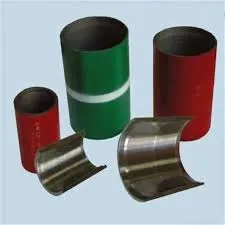- Afrikaans
- Albanian
- Amharic
- Arabic
- Armenian
- Azerbaijani
- Basque
- Belarusian
- Bengali
- Bosnian
- Bulgarian
- Catalan
- Cebuano
- Corsican
- Croatian
- Czech
- Danish
- Dutch
- English
- Esperanto
- Estonian
- Finnish
- French
- Frisian
- Galician
- Georgian
- German
- Greek
- Gujarati
- Haitian Creole
- hausa
- hawaiian
- Hebrew
- Hindi
- Miao
- Hungarian
- Icelandic
- igbo
- Indonesian
- irish
- Italian
- Japanese
- Javanese
- Kannada
- kazakh
- Khmer
- Rwandese
- Korean
- Kurdish
- Kyrgyz
- Lao
- Latin
- Latvian
- Lithuanian
- Luxembourgish
- Macedonian
- Malgashi
- Malay
- Malayalam
- Maltese
- Maori
- Marathi
- Mongolian
- Myanmar
- Nepali
- Norwegian
- Norwegian
- Occitan
- Pashto
- Persian
- Polish
- Portuguese
- Punjabi
- Romanian
- Russian
- Samoan
- Scottish Gaelic
- Serbian
- Sesotho
- Shona
- Sindhi
- Sinhala
- Slovak
- Slovenian
- Somali
- Spanish
- Sundanese
- Swahili
- Swedish
- Tagalog
- Tajik
- Tamil
- Tatar
- Telugu
- Thai
- Turkish
- Turkmen
- Ukrainian
- Urdu
- Uighur
- Uzbek
- Vietnamese
- Welsh
- Bantu
- Yiddish
- Yoruba
- Zulu
ss pipe coupling
Understanding SS Pipe Couplings Applications, Benefits, and Installation
Stainless steel pipe couplings, often referred to as SS pipe couplings, are critical components in various piping systems used in industrial, commercial, and residential applications. These couplings play a vital role in connecting two sections of pipe, ensuring a secure and reliable flow of fluids or gases. In this article, we will explore the characteristics, advantages, applications, and installation procedures of SS pipe couplings.
Characteristics of SS Pipe Couplings
Stainless steel pipe couplings are primarily made from stainless steel, an alloy known for its excellent corrosion resistance, durability, and strength. The most common grades of stainless steel used for pipe couplings include 304 and 316, each offering specific properties suitable for various environments. Grade 304 is widely used for its general corrosion resistance, while Grade 316 is preferred for more corrosive environments due to its enhanced resistance to chlorides.
These couplings come in various sizes, dimensions, and configurations, allowing for compatibility with different pipe types and diameters. They can be designed for specific pressure ratings and temperature ranges, making them versatile for a wide array of applications. Additionally, some SS couplings are manufactured with a smooth interior finish to promote optimal fluid flow and prevent buildup.
Benefits of Using SS Pipe Couplings
1. Corrosion Resistance One of the most significant advantages of using stainless steel pipe couplings is their resistance to corrosion. This property makes them ideal for applications in harsh environments, such as chemical processing plants, marine settings, and wastewater treatment facilities.
2. Durability and Strength Stainless steel couplings are built to withstand high pressures and extreme temperatures. Their durability ensures long-term performance, reducing the need for frequent replacements and minimizing maintenance costs.
3. Hygienic Properties In industries where sanitation is crucial, such as food and beverage processing or pharmaceuticals, stainless steel's non-porous nature prevents the growth of bacteria and other pathogens, helping to maintain a clean and safe environment.
4. Aesthetic Appeal The shiny, polished finish of stainless steel is visually pleasing and can enhance the overall appearance of installations where visibility is a concern.
ss pipe coupling

Applications of SS Pipe Couplings
Stainless steel pipe couplings are employed in various industries due to their reliability and versatile nature. Common applications include
- Water and Wastewater Systems Used for connecting pipes in treatment plants and distribution systems. - Oil and Gas Integral for connecting pipelines that transport crude oil, natural gas, or refined products. - Food and Beverage Essential for dairy, brewing, and other food processing applications where hygiene is critical. - Pharmaceuticals Used in processing facilities where contamination control is paramount. - HVAC Systems Employed in heating, ventilation, and air conditioning systems for both residential and commercial buildings.
Installation of SS Pipe Couplings
Installing stainless steel pipe couplings requires attention to detail to ensure a proper and leak-free connection. Here are the general steps for installation
1. Preparation Ensure the pipe ends are clean and free of any debris or oxidation. Measure the alignment of the pipes to ensure a proper fit.
2. Lubrication For certain types of couplings, applying a lubricant can help ease the connection process.
3. Aligning the Coupling Position the coupling over the ends of the pipes to be joined, ensuring that it is centered.
4. Securing the Connection Depending on the type of coupling (mechanical, threaded, or welded), follow the appropriate procedure to secure the connection. Ensure that all fittings are tightened to the manufacturer’s specifications to avoid leaks.
5. Testing After installation, conduct a pressure test to check for any leaks in the system.
In conclusion, SS pipe couplings are an essential component of numerous piping systems across various industries. Their durability, corrosion resistance, and versatility make them ideal for reliable and efficient fluid flow management. Understanding their characteristics, benefits, and proper installation techniques will ensure optimal performance in any application.
-
Tubing Pup Joints: Essential Components for Oil and Gas OperationsNewsJul.10,2025
-
Pup Joints: Essential Components for Reliable Drilling OperationsNewsJul.10,2025
-
Pipe Couplings: Connecting Your World EfficientlyNewsJul.10,2025
-
Mastering Oilfield Operations with Quality Tubing and CasingNewsJul.10,2025
-
High-Quality Casing Couplings for Every NeedNewsJul.10,2025
-
Boost Your Drilling Efficiency with Premium Crossover Tools & Seating NipplesNewsJul.10,2025







